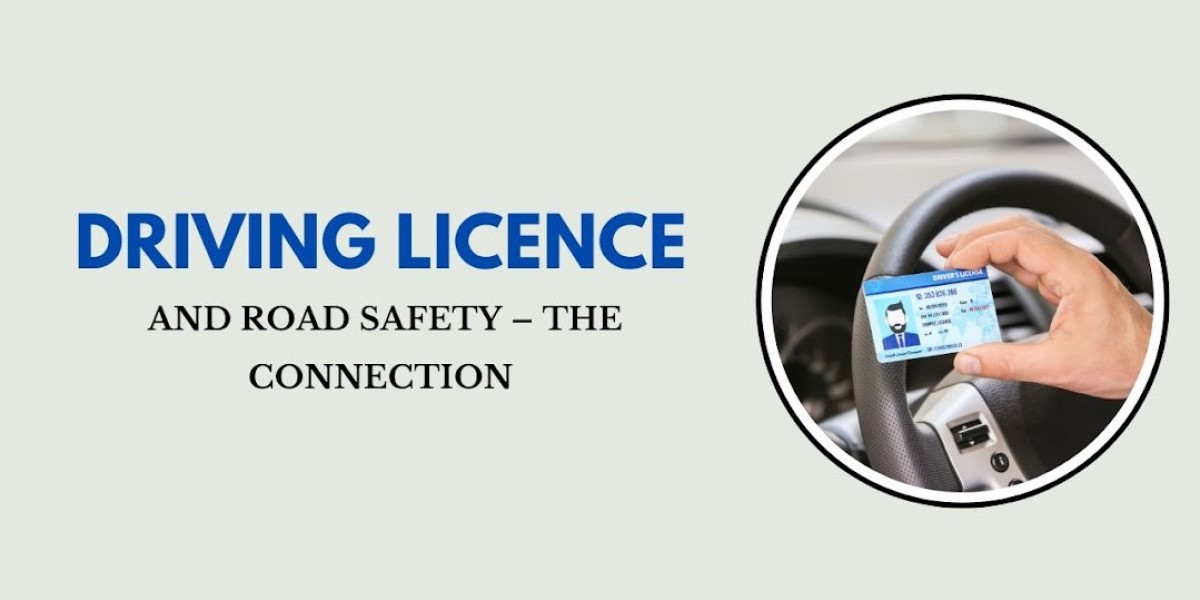Driving is a common part of life for millions of people worldwide. Whether for work, leisure, or daily errands, vehicles have become an essential mode of transportation. But driving is also a serious responsibility. It involves managing risks on the road, following rules, and making sure everyone, including drivers, passengers, pedestrians, and other road users, stays safe.
A Driving Licence is a key element in this system. It is not just a document to prove that someone can drive, but a vital tool for promoting road safety. This article explains the connection between driving licences and road safety, why licences matter, how they help prevent accidents, and what drivers must do to keep themselves and others safe on the road.
What is a Driving Licence?
A driving licence is an official government-issued document that permits a person to operate a motor vehicle on public roads. It shows that the person has met certain legal and practical requirements to drive safely. These requirements typically include:
Passing a written test on traffic rules and road signs.
Passing a practical driving test shows driving skills.
Meeting age and health standards.
Sometimes, completing a driver education program.
The licence includes important details such as the driver's name, photo, date of birth, and types of vehicles they are allowed to drive.
Why is a Driving Licence Important for Road Safety?
1. Proof of Competence
A driving licence proves that the driver has learned and understood the traffic laws and road rules. It ensures that they know how to operate a vehicle safely, obey traffic signals, and respond to emergencies. Without a licence, there is no guarantee that the person driving has the knowledge or skills to do so safely.
2. Legal Requirement
Driving without a licence is illegal in most countries. This law helps keep untrained or unfit people off the roads. Enforcement of licensing laws reduces reckless or dangerous driving, thereby preventing accidents.
3. Accountability and Identification
If a driver violates traffic laws or causes an accident, the driving licence helps authorities identify and hold the person accountable. This discourages careless driving and encourages responsible behavior.
4. Encourages Learning and Training
Obtaining a licence motivates new drivers to undergo proper training and preparation. Many licensing systems include mandatory training courses on road safety, defensive driving, and first aid.
How Does a Driving Licence Help Improve Road Safety?
1. Training and Testing
Licensing involves testing knowledge and skills, which directly relates to road safety. A well-designed driving test checks a person’s ability to:
Control the vehicle properly.
Follow traffic rules.
Anticipate and avoid hazards.
Drive safely in different weather and traffic conditions.
2. Licensing Categories and Restrictions
Licences are often categorized by the types of vehicles allowed. For example, separate licences are issued for motorcycles, cars, trucks, or buses. This ensures drivers operate vehicles suited to their experience and training.
Certain restrictions are also applied to new or young drivers. These may include:
Limits on night driving.
Limits on carrying passengers.
Zero tolerance for alcohol or drugs.
These rules help reduce risks during the learning phase.
3. Renewal and Medical Fitness Checks
Licences require periodic renewal. During renewal, drivers may need to prove their medical fitness (e.g., vision, hearing) and update their knowledge of traffic rules. This helps remove unsafe drivers from the roads and keeps drivers informed about new regulations.
4. Penalties and Suspension
Licensing authorities can suspend or revoke licences for serious traffic violations such as drunk driving, speeding, or reckless behavior. This reduces the chance of repeat offenses and dangerous driving.
Road Safety: What Does It Mean?
Road safety means taking steps to reduce the risk of accidents and injuries on roads. It includes:
Designing safe roads and traffic systems.
Educating drivers, pedestrians, and cyclists.
Enforcing traffic laws.
Promoting safe driving behavior.
The Connection Between Driving Licence and Road Safety
The link between driving licences and road safety is direct and strong. Here is how they connect:
1. Qualified Drivers Reduce Accidents
Accidents happen often because drivers do not have the necessary skills or knowledge. A licensing system filters out unqualified or dangerous drivers. Qualified drivers are more likely to make safe decisions and follow traffic rules, leading to fewer accidents.
2. Licensing Promotes Responsible Behavior
The licensing process teaches drivers about their responsibilities and the consequences of unsafe driving. Knowing they can lose their licence or face legal trouble encourages drivers to drive carefully.
3. Helps Track and Manage Driver Behavior
Licences allow authorities to monitor driving records. Repeat offenders can be identified and dealt with, improving overall road safety.
4. Protects Vulnerable Road Users
Properly licensed drivers are more aware of vulnerable groups like pedestrians and cyclists. Training emphasizes caution around schools, crosswalks, and crowded areas.
5. Supports Emergency Response
In case of accidents, knowing the driver’s identity and license status helps police and emergency services respond quickly and effectively.
Impact of Driving Without a Licence on Road Safety
Driving without a licence is a major safety risk. Reasons include:
No proof of driving skills or knowledge.
Higher likelihood of reckless or irresponsible behavior.
Increased chances of violating traffic laws.
Difficulty in holding the driver accountable after accidents.
Role of Governments and Organizations
Governments worldwide recognize the importance of licensing for road safety. They:
Set licensing standards.
Organize driver training and testing programs.
Enforce licensing laws strictly.
Run public awareness campaigns about safe driving and licensing.
Collaborate with schools and communities to teach young people about road safety.
Responsibilities of Licensed Drivers for Road Safety
Holding a driving licence means having certain responsibilities:
Follow traffic rules and speed limits.
Do not drive under the influence of alcohol or drugs.
Use seat belts and ensure passengers do the same.
Avoid distractions like mobile phones while driving.
Maintain the vehicle in safe working condition.
Be courteous and patient with other road users.
Drive according to road and weather conditions.
How Road Safety Can Be Improved Through Licensing Reforms
Better Driver Education: Including more practical and theoretical training focused on safety and defensive driving.
Stricter Testing: Raising standards in both written and practical tests to ensure drivers are well-prepared.
Use of Technology: Incorporating simulators and online learning tools to improve driver training.
Continuous Assessment: Introducing regular checks and refresher courses, especially for commercial and elderly drivers.
Awareness Campaigns: Promoting the importance of licensing and safe driving through media and schools.
Suggested read- How to Check Driving Licence Status in India
Conclusion
Driving licences and road safety are closely connected. A driving licence is more than a permit to operate a vehicle; it is a symbol of responsibility and skill. By ensuring that only qualified and trained individuals get licences, governments protect everyone on the road.
Proper licensing helps reduce accidents, encourages safe driving habits, and holds drivers accountable for their actions. It plays a key role in creating safer roads for drivers, passengers, and pedestrians alike.
For individuals, obtaining and maintaining a driving licence means accepting the responsibility to drive safely and follow the law. For governments, enforcing strict licensing rules and improving training programs is a vital step in promoting road safety.
Together, drivers, governments, and communities can build a safer road environment where accidents are minimized and lives are saved.








